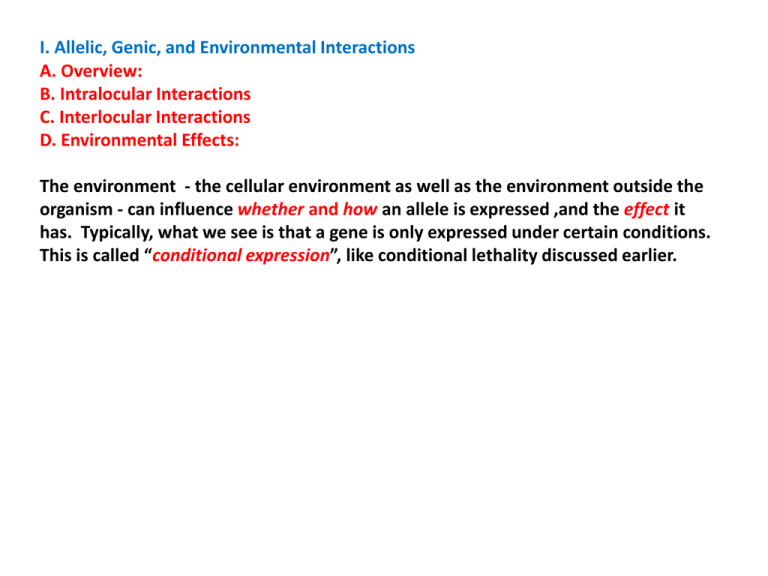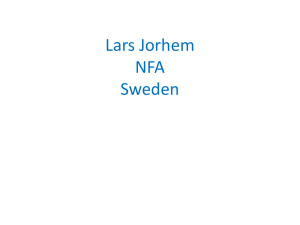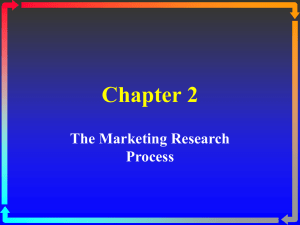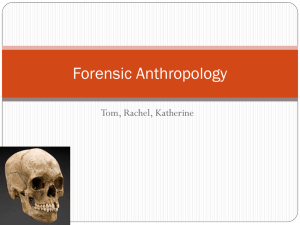
I. Allelic, Genic, and Environmental Interactions
A. Overview:
B. Intralocular Interactions
C. Interlocular Interactions
D. Environmental Effects:
The environment - the cellular environment as well as the environment outside the
organism - can influence whether and how an allele is expressed ,and the effect it
has. Typically, what we see is that a gene is only expressed under certain conditions.
This is called “conditional expression”, like conditional lethality discussed earlier.
D. Environmental Effects:
1. TEMPERATURE
- Siamese cats and Himalayan rabbits – dark feet and
ears, where temps are slightly cooler. Their pigment enzymes
function at cool temps. If raised at cooler temps, they are more
pigmented… even looking like a genetically melanic form. When
this happens in rabbits, the Himalayan genotype is expressing a
phenocopy – copying the phenotype of another genotype.
- Arctic fox, hares – their pigment genes function at high
temps and are responsible for a change in coat color in spring and
fall, and a change back to white in fall and winter.
So, these genes have conditional expression.
D. Environmental Effects:
1. TEMPERATURE
2. TOXINS
- people have genetically different sensitivities to different toxins.
Certain genes are associated with higher rates of certain types of
cancer, for example. However, they are not ‘deterministic’… their
effects must be activated by some environmental variable.
PKU = phenylketonuria… genetic inability to convert phenylalanine
to tyrosine. Phenylalanine can build up and is toxic to nerve cells.
Single gene recessive disorder.
But if a homozygote recessive eats a diet low in phenylalanine, no
negative consequences develop. So, the genetic predisposition to
express the disorder is influenced by the environment. These genes
have conditional expression.
D. Environmental Effects:
1. TEMPERATURE
2. TOXINS
3. THE GENETIC ENVIRONMENT – “EPIGENETICS”
Epigenetics is the study of the heritable changes in the expression of
genes unrelated to changes in the actual DNA sequence of the genes.
Heritable changes due to different patterns in gene regulation
- within an organism: tissue specialization, resulting in heritable changes in a
cell line through mitotic generations, creating different cell and tissue types
(even though they all have the same DNA).
- between organisms: regulatory differences between monozygotic twins make
them phenotypically different, even though they are genetically identical.
D. Environmental Effects:
1. TEMPERATURE
2. TOXINS
3. THE GENETIC ENVIRONMENT – “EPIGENETICS”
1. Position Effects
- the effect of a gene may be influenced by WHERE it is
in the genome – and its immediate neighbors. Genes can change
position due to a variety of mutations. It may be placed next to
or into densely coiled ‘heterochromatin’ and be turned off. Or, it
may be placed next to an ‘enhancer’ and ‘up-regulated’ (turned
on more).
Position effect
variegation in eye
pigmentation in
Drosophila.
1. Position Effects
Can be transcribed – ‘on’
Can’t be transcribed – ‘off’
1. Position Effects
Human Diseases Caused by Position Effects
Aniridia (malformed iris in the eye)
X-linked deafness
B-Thalassemia
SRY sex reversal
Split hand and foot malformation
D. Environmental Effects:
1. TEMPERATURE
2. TOXINS
3. THE GENETIC ENVIRONMENT – “EPIGENETICS”
1. Position Effects
2. Imprinting
- The effect of a gene can depend on the parent it is inherited from. During
gamete formation, both sexes selectively ‘imprint’ certain genes. This amounts to
turning them on or off, regardless of their previous state in the organisms own body.
2. Imprinting
- “insulin-like growth factor 2” (igf-2) is a protein, produced in mammalian liver cells,
that circulates in the blood. It stimulates cell growth and mitosis during fetal
development. Mutation / inactivation causes small size at birth.
2. Imprinting
- “insulin-like growth factor 2” (igf-2) is a protein, produced in mammalian liver cells,
that circulates in the blood. It stimulates cell growth and mitosis during fetal
development. Mutation / inactivation causes small size at birth.
Mutant male x normal female
ss
SS
Ss
All heterozygous, but
all small
Normal male x mutant female
SS
ss
Ss
All heterozygous, but
all normal
RECIPROCAL CROSSES YIELD DIFFERENT RESULTS –
THE SEX OF THE PARENT EXPRESSING NORMAL SIZE “MATTERS” FOR
THE PHENOTYPE OF THE OFFSPRING. If the gene for normal growth
comes from males, it is ON, if it comes from females, it is OFF.
2. Imprinting
Confirmed in the
F1 X F1 CROSS:
Activity is not a
function of the
animal’s own sex, it
is a function of the
sex of the parent
that gave the gene.
This example is a bit
misleading… it equates
‘imprinting’ only with the
female turning the gene off.
But imprinting is regulation
that can also turn a gene
on.
Small
Small
2. Imprinting
Confirmed in the
F1 X F1 CROSS:
‘off’ in
this male
The same pattern
occurs when SMALL
heterozygotes are
mated together.
‘Imprinting’ occurs
during gamete
formation, with
males turning ON the
gene in sperm
(although it was off
in their own cells),
and females turning
OFF the gene in eggs
(which was also ‘off’
in their own cells).
Imprinted
‘on’
‘off’ in this
female
2. Imprinting
- why?
Haig ‘Parental Conflict’ Hypothesis:
- selection will favor males that increase the growth of their offspring, so
they should pass on igf-2 genes that are ON.
- but the female actually provides the energy for embryonic growth, and
the energetic demands of maximal embryonic growth will reduce her survival and
subsequent reproduction. Her most adaptive reproductive strategy is to reduce the
growth of embryos to a reasonable level that doesn’t threaten her own survival.
- she turns OFF her igf-2 genes that she passes to her offspring.
Different selective pressures on males and females, selecting for different behaviors,
different patterns of energy allocation, and different patterns of gene activation.
2. Imprinting
- why?
Haig ‘Parental Conflict’ Hypothesis:
- selection will favor males that increase the growth of their offspring, so
they should pass on igf-2 genes that are ON.
- but the female actually provides the energy for embryonic growth, and
the energetic demands of maximal embryonic growth will reduce her survival and
subsequent reproduction. Her most adaptive reproductive strategy is to reduce the
growth of embryos to a reasonable level that doesn’t threaten her own survival.
- she turns OFF her igf-2 genes that she passes to her offspring.
A Test: The igf-2 receptor protein in cell membranes.
- this receptor degrades the igf-2 protein, reducing its effect on growth.
- Haig and Graham predicted this should be imprinted as well, and OFF
when passed from males and ON when passed from females, based on the ‘parental
conflict’ hypothesis.
- when tested, it had this pattern of imprinting – supporting their
hypothesis.
2. Imprinting
- why?
- how?
- methyl groups
are added to C-G base pairs
in the promoter (“CpG
islands”), interrupting the
binding of the RNA
polymerase, stopping
transcription (turning the
gene OFF).
2. Imprinting
- why?
- how?
- are they common and important?
rare - ~80 have been identified in 30 years, in animals and plants.
2. Imprinting
- why?
- how?
- are they common and important?
rare - ~80 have been identified in 30 years, in animals and plants.
But in humans, several diseases are caused by the failure to inherit
correctly imprinted genes.
Prader-Willi Syndrome:
- hunger and weight gain
- cognitive disability
- reduced sex organs
- decreased muscle tone
Prader-Willi Syndrome:
- hunger and weight gain
- cognitive disability
- reduced sex organs
- decreased muscle tone
Caused by deletion in the 15q11-13 region in
the father. This region is methylated (‘off’) in
eggs, and should be ON in sperm. Deletion in
the father results in embryos that lack one
gene (from father) and have an inactive gene
from mother (imprinted).
Angelman Syndrome:
- neurological disorder
- seizures
- smiling and happy
- microcephaly
Caused by deletion of a single gene (UBE3A)
in 15q11-13 region in mother. This gene is
methylated in sperm, and should be ON in
eggs. Deletion in the mother results in
embryos that lack one gene (from mother) and
have an inactive gene from father (imprinted).
These conditions can also occur when a zygote receives both chromosomes
from one parent (we’ll see how this happens later).
Heterodisomy = both homologs given from one parent
Isodisomy = replicates of one homolog given from one parent
MOTHER
FATHER
Maternal deletion
Paternal Imprint (‘off’)
normal
Angelman
normal
Isodisomy
Isodisomy
Angelman
Angelman
Heterodisomy
Angelman
D. Environmental Effects:
1. TEMPERATURE
2. TOXINS
3. THE GENETIC ENVIRONMENT - Epigenetics
1. Position Effects
2. Imprinting
3. Maternal Effects
– Genotype of mother determines phenotype of offspring
- by contributing her proteins to the egg, which influence early
development of embryo (regardless of the embryo’s genotype for this trait).
3. Maternal Effects:
In Limnaea snails,
lefthanded(sinistral)
coiling is recessive
(dd) to dextral (D-).
- But reciprocal
crosses yield
different results; F1
het’s that had
sinistral mothers
are sinistral, even
though they have
the Dd genotype,
themselves.
3. Maternal Effects:
In Limnaea snails,
lefthanded(sinistral)
coiling is recessive
(dd) to dextral (D-).
- When the Dd
heterozygotes
(sinistral or dextral)
are self-crossed (so
the “mother’ is
genetically dextral
(and produces
dextral proteins in
her eggs even
though it wasn’t in
her own body cells)
– all the offspring
(even the ¼ dd) are
dextral.
All
dextral,
even dd
4. The Cellular Environment of the Egg - Maternal Effects:
All dextral, even
dd
D. Environmental Effects:
1. TEMPERATURE
2. TOXINS
3. THE GENETIC ENVIRONMENT - Epigenetics
1. Position Effects
2. Imprinting
3. Maternal Effects
– Genotype of mother determines phenotype of offspring
- by contributing her proteins to the egg, which influence early
development of embryo (regardless of the embryo’s genotype for this trait).
- through extrachromosomal inheritance – the inheritance of
genes “outside” the nuclear chromosomes, rganelles like mitochondria and
chloroplasts that have DNA also. These organelles are donated only in the EGG, and
so are another potential source of a maternal effect.
- through extrachromosomal inheritance – the inheritance of
genes “outside” the nuclear chromosomes, in organelles like mitochondria and
chloroplasts that have DNA also. These organelles are donated only in the EGG, and
so are another potential source of a maternal effect.
Problem of Recognizing the effects because of HETEROPLASMY – there are
hundreds of organelles in each cell, so seeing the effects of a loss-of-function
mutant are difficult, and may happen only in a few cells in a tissue that happen to
randomly get more mutant organelles.
Myoclonic epilepsy and ragged red fiber disease (MERFF) in humans
- caused by mitochondrial mutations affecting aerobic respiration (decreasing ATP production).
- cells with lots of these mitochondria don’t function well; this is especially debilitating in tissues
with high energy demand, like neural and muscle tissue.
- causes lack of muscle control, seizures, deafness, and dementia
- passed maternally; children of afflicted fathers do not inherit mutant mitochondria.
a) Mild proliferation of mutant mitochondria. b) high proliferation; cell full of mutant mitochondria
- through extrachromosomal inheritance – the inheritance of
genes “outside” the nuclear chromosomes, in organelles like mitochondria and
chloroplasts that have DNA also. These organelles are donated only in the EGG, and
so are another potential source of a maternal effect.
Problem of Recognizing the effects because of HETEROPLASMY – there are
hundreds of organelles in each cell, so seeing the effects of a loss-of-function
mutant are difficult, and may happen only in a few cells in a tissue that happen to
randomly get more mutant organelles.
3. THE GENETIC ENVIRONMENT - Epigenetics
1. Position Effects
2. Imprinting
3. Maternal Effects
4. Sex-Limited and Sex-Influenced Traits
- the expression of an autosomal trait depends on the sex of the organism,
probably as a consequence of the hormonal environment.
Sex-Limited: only expressed on one sex, males have genes for milk
production, but don’t produce milk.
Sex-influenced: more frequent in one sex than another pattern baldness –
Bb males bald, Bb females not
FEMALES
MALES
BB
Bald (mild, late)
Bald
Bb
Not bald
Bald
bb
Not bald
Not bald
I. Allelic, Genic, and Environmental Interactions
A. Overview:
B. Intralocular Interactions
C. Interlocular Interactions
D. Environmental Effects
E. The “Value” of an Allele
1. There are obvious cases where genes are bad – lethal alleles
2. But there are also ‘conditional lethals’ that are only lethal under certain
conditions – like temperature-sensitive lethals.
3. And for most genes, the relative value of one allele over another is
determined by the relative effects of those genes in a particular environment. And
these relative effects may be different in different environments.
I. Allelic, Genic, and Environmental Interactions
A. Overview:
B. Intralocular Interactions
C. Interlocular Interactions
D. Environmental Effects
E. The “Value” of an Allele
Survivorship in U.S., sickle-cell anemia
(incomplete dominance, one gene ‘bad’,
two ‘worse’)
SS
Ss
ss
I. Allelic, Genic, and Environmental Interactions
A. Overview:
B. Intralocular Interactions
C. Interlocular Interactions
D. Environmental Effects
E. The “Value” of an Allele
Survivorship in U.S., sickle-cell anemia
(incomplete dominance, one gene ‘bad’,
two ‘worse’)
SS
Ss
ss
Survivorship in tropical Africa
(one gene ‘good’, two ‘bad’)
SS
Ss
ss
I. Allelic, Genic, and Environmental Interactions
A. Overview:
B. Intralocular Interactions
C. Interlocular Interactions
D. Environmental Effects
E. The “Value” of an Allele
Survivorship in U.S., sickle-cell anemia
(incomplete dominance, one gene ‘bad’,
two ‘worse’)
Malaria is still a primary cause of death
in tropical Africa (with AIDS). The
malarial parasite can’t complete
development in RBC’s with sickle cell
hemoglobin… so one SC gene confers a
resistance to malaria without the totally
debilitating effects of sickle cell.
Survivorship in tropical Africa
(one gene ‘good’, two ‘bad’)
Survival in U. S.
SS
Ss
ss
Survival in Tropics
SS
Ss
ss
I. Allelic, Genic, and Environmental Interactions
A. Overview:
B. Intralocular Interactions
C. Interlocular Interactions
D. Environmental Effects
E. The “Value” of an Allele
Survivorship in U.S., sickle-cell anemia
(incomplete dominance, one gene ‘bad’,
two ‘worse’)
SS
Ss
ss
As Darwin realized, selection will favor
different organisms in different
environments, causing populations to
become genetically different over time.
Survivorship in tropical Africa
(one gene ‘good’, two ‘bad’)
SS
Ss
ss
I. Allelic, Genic, and Environmental Interactions
II. Sex Determination and Sex Linkage
I. Allelic, Genic, and Environmental Interactions
II. Sex Determination and Sex Linkage
A. Sex Determination
1. Environmental Sex Determination
a. Temperature
MT
FT
I. Allelic, Genic, and Environmental Interactions
II. Sex Determination and Sex Linkage
A. Sex Determination
1. Environmental Sex Determination
a. Temperature
MT
FT
I. Allelic, Genic, and Environmental Interactions
II. Sex Determination and Sex Linkage
A. Sex Determination
1. Environmental Sex Determination
a. Temperature
MT
FT
A. Sex Determination
1. Environmental Sex Determination
a. Temperature
b. Size/Nutrition
Arisaema triphyllum
“Jack-in-the-Pulpit”
Small plants - male
Large plants - female
A. Sex Determination
1. Environmental Sex Determination
a. Temperature
b. Size/Nutrition
Benefit of being male – quantity of offspring
Benefit of being female – regulate quality of offspring
Cervus elaphus
Red deer
Starving pregnant females
selectively abort male
embryos. Small daughters
may still mate; small sons will
not acquire a harem and will
not mate. Selection has
favored females who save
their energy, abort male
embryos when starving, and
maybe live to reproduce next
year.
A. Sex Determination
1. Environmental Sex Determination
a. Temperature
b. Size/Nutrition
c. Social Environment
Sexually mature female
(Inhibits development of males)
Sexually mature male
Immature males
Wouldn’t the species do better if there were more females/group?
Yes, but selection favors individual reproductive success.
A. Sex Determination
1. Environmental Sex Determination
a. Temperature
b. Size/Nutrition
c. Social Environment
Midas cichlid
Brood
A. Sex Determination
1. Environmental Sex Determination
a. Temperature
b. Size/Nutrition
c. Social Environment
Midas cichlid
Add Larger juveniles
Brood
female
A. Sex Determination
1. Environmental Sex Determination
a. Temperature
b. Size/Nutrition
c. Social Environment
Midas cichlid
Add smaller juveniles
Brood
male
A. Sex Determination
1. Environmental Sex Determination
2. Chromosomal Sex Determination
a. Protenor sex determination
The presence of 1 or 2 sex chromosomes determines sex
Order: Hemiptera “True Bugs”
Family Alydidae – Broad-headed bugs
A. Sex Determination
1. Environmental Sex Determination
2. Chromosomal Sex Determination
a. Protenor sex determination
b. Lygaeus sex determination
The type of sex chromosomes determines sex
Order: Hemiptera
Family: Lygaeidae “Chinch/Seed Bugs”
A. Sex Determination
1. Environmental Sex Determination
2. Chromosomal Sex Determination
a. Protenor sex determination
b. Lygaeus sex determination
Which sex is the ‘heterogametic’ sex varies
XX female, XY – male
ZZ male, ZW female
Most mammals, including humans
Some insects
Some plants
Birds
Some fish
Some reptiles
Some insects (Butterflies/Moths)
Some plants
A. Sex Determination
1. Environmental Sex Determination
2. Chromosomal Sex Determination
a. Protenor sex determination
b. Lygaeus sex determination
c. Balanced sex determination
The ratio of X’s to autosomal sets determines sex
Human genotype and sex
Drosophila genotype and sex
2n: 46, XX = female
2n: 46, XY =male
2n+1: 47, XXY = male
2n-1: 45, X
= female
2n:
2n:
2n+1:
2n-1:
Have a Y = male
No Y = female
Ratio of autosomal sets:X = 2:1 = male
Ratio of autosomal sets:X = 1:1 = female
8, XX =female
8, XY = male
9, XXY = female
7, X = male









